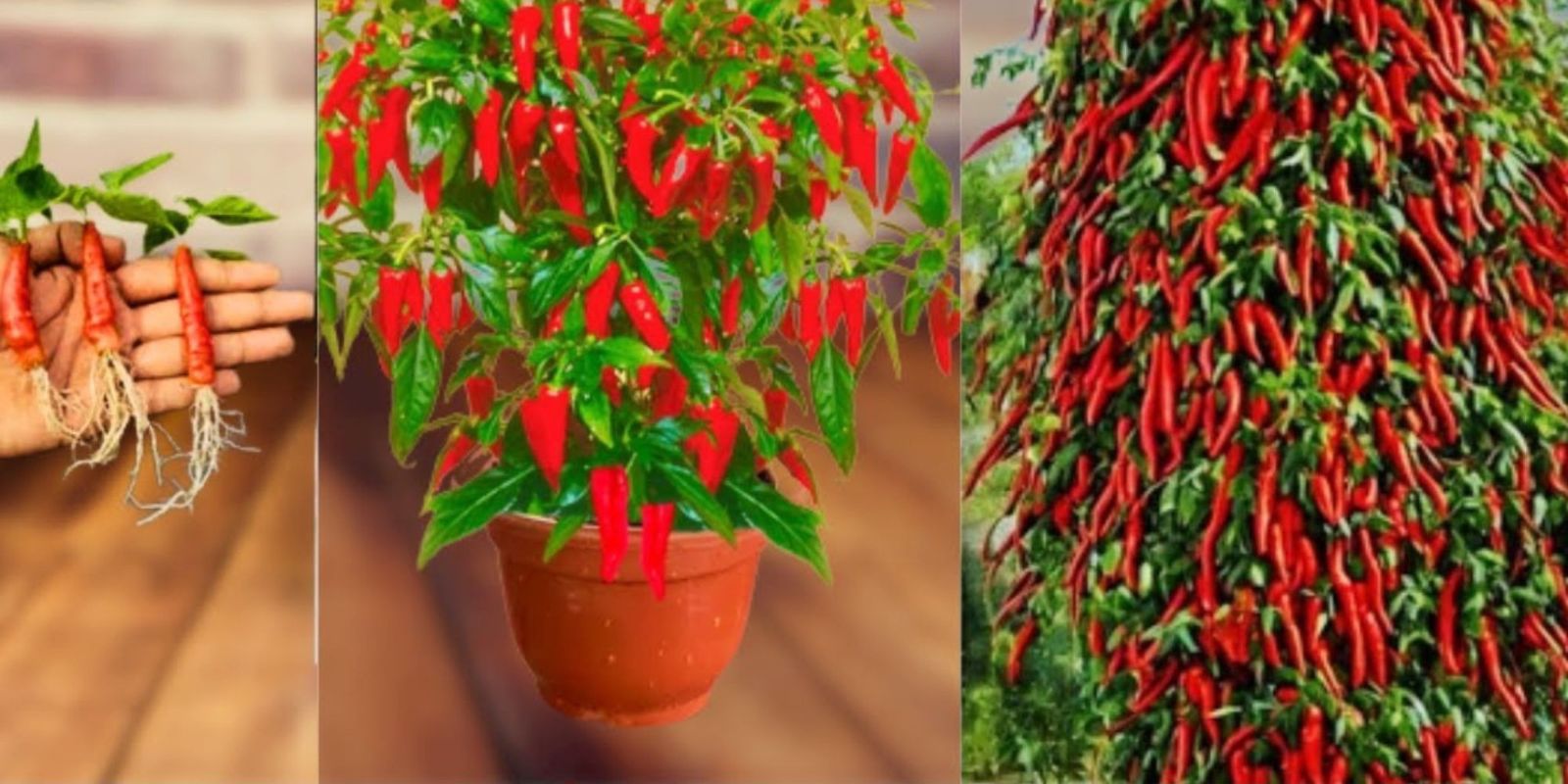Growing chili peppers at home is a rewarding experience, and they can be grown indoors or outdoors, depending on your climate and available space. Here’s a step-by-step guide on how to grow chili peppers at home:
1. Selecting Chili Pepper Varieties:
- Choose chili pepper varieties that suit your taste preferences and growing conditions. Some popular varieties include jalapeño, habanero, serrano, and bell peppers.
- Consider the level of heat you prefer, as chili peppers vary widely in their spiciness.
2. Starting Seeds:
- Start chili pepper seeds indoors 8-10 weeks before the last frost date in your area.
- Use seed-starting trays or small pots filled with seed-starting mix.
- Plant 2-3 seeds per container, about 1/4 inch deep.
- Keep the soil consistently moist and provide warmth (around 70-80°F or 21-27°C) for germination.
- Once seedlings emerge, provide plenty of light. You can use grow lights if natural light is insufficient.
3. Transplanting Seedlings:
- Transplant chili pepper seedlings outdoors after the danger of frost has passed and the soil has warmed up.
- Choose a sunny location with well-draining soil. Chili peppers require full sun for optimal growth.
- Space plants 18-24 inches apart, depending on the variety.
4. Providing Care:
- Water chili pepper plants regularly, keeping the soil consistently moist but not waterlogged. Avoid overhead watering to prevent fungal diseases.
- Fertilize with a balanced fertilizer or organic compost every 4-6 weeks during the growing season.
- Mulch around the base of the plants to conserve moisture and suppress weeds.
5. Supporting Plants:
- Some chili pepper varieties may benefit from staking or support cages, especially if they produce heavy fruit.
- Install stakes or cages when transplanting seedlings to avoid damaging roots later on.
6. Managing Pests and Diseases:
- Monitor plants regularly for signs of pests such as aphids, spider mites, and pepper weevils. Handpick pests when possible or use organic pest control methods.
- Keep an eye out for signs of disease such as powdery mildew, blossom end rot, and bacterial spot. Practice good garden hygiene and avoid overhead watering to reduce the risk of disease.
7. Harvesting:
- Chili peppers can be harvested once they reach the desired size and color. Most peppers are harvested when they are green, but they will continue to ripen to their final color if left on the plant.
- Use pruning shears or scissors to cut peppers from the plant, leaving a small portion of the stem attached.
- Harvest peppers regularly to encourage continued production throughout the growing season.
8. Storing:
- Store harvested chili peppers in the refrigerator for short-term storage.
- For long-term storage, chili peppers can be dried, frozen, or preserved in oil or vinegar.
By following these steps, you can successfully grow chili peppers at home and enjoy a bountiful harvest of fresh, flavorful peppers. Adjust your care routine based on the specific needs of the chili pepper varieties you are growing, and don’t be afraid to experiment with different growing methods to find what works best for you.

